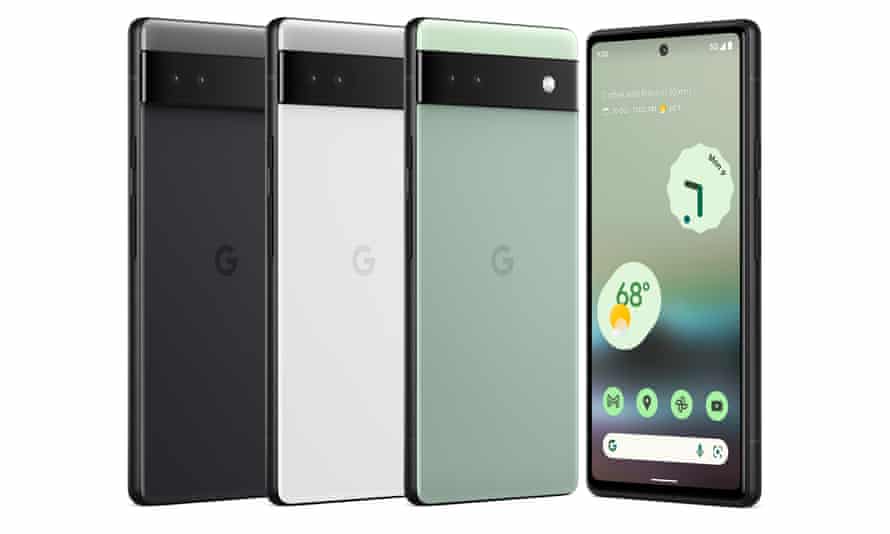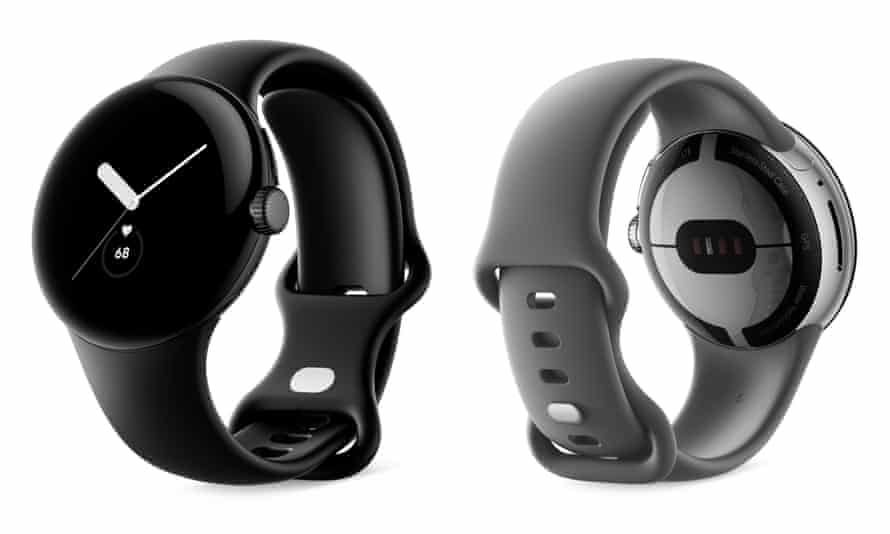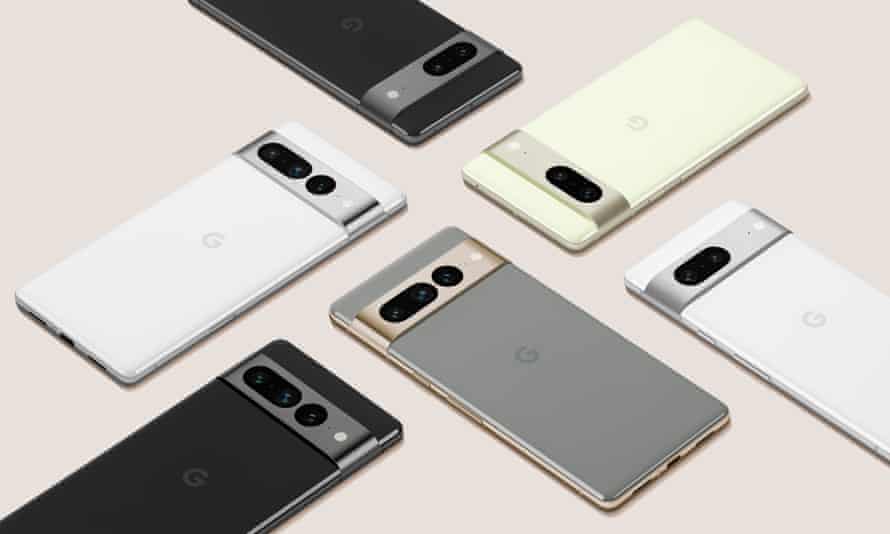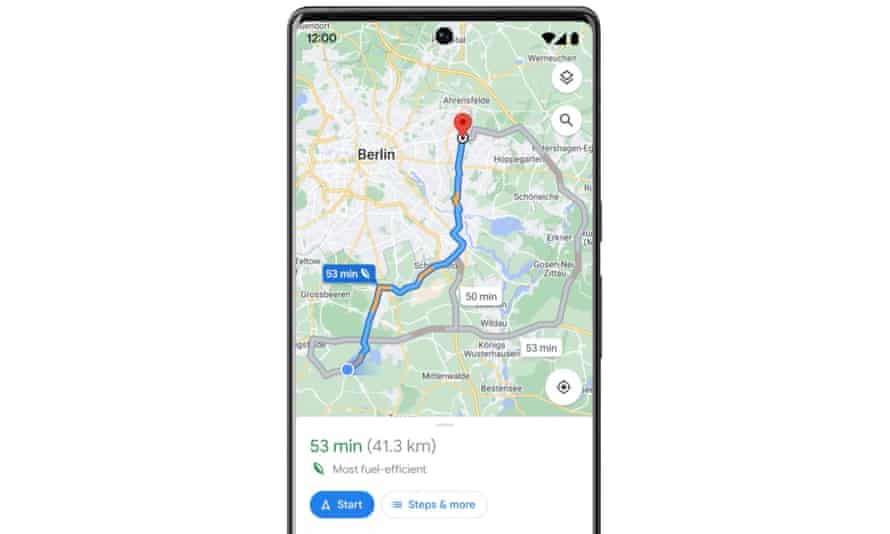Google has announced a series of new products as it looks to compete with Apple on tablets and smartwatches. It has unveiled a lower-cost smartphone, high-end earbuds and a watch due later this year, as well as Android updates.
During the keynote kicking off its IO developer conference, Google set out its intention to build a broader collection of own-brand devices rather than rely on third parties such as Samsung using its software.
“We’re going for the ecosystem,” said Rick Osterloh, Google’s head of consumer hardware. “We want people to know where Google is headed with devices as an organization over the next few years.”
Pixel 6a

The Pixel 6a is Google’s new smaller, mid-range Android phone, costing from £399 ($449/A$749), shipping on 28 July. It has a 6.1in screen and the same recycled aluminum body, two-tone colors and camera bar across the back as the firm’s high-end phones.
It has Google’s top-end Tensor processor, 5G and the Titan M2 security chip from the Pixel 6, with 6GB of memory and 128GB of storage. It will be supported with software updates for at least five years, making it one of the longest-lasting Android phones.
The 6a has a pair of wide and ultra-wide 12-megapixel cameras on the back, which support the same improved skin tone and magic eraser features as Google’s top models.
Pixel Buds Pro

Google announced its first Bluetooth earbuds with noise canceling, called the Pixel Buds Pro, which will ship on 28 July costing £179 ($199/A$299).
The earbuds use Google-designed chips, algorithms and speakers, competing directly with Apple’s pricier AirPods Pro. They have IPX4 sweat resistance and the same smart features as Google’s previous earbuds such as hands-free voice assistant, walking directions and instant translation abilities.
The Buds Pro can connect to two Bluetooth devices at once, such as a phone for calls and a laptop for music, including iPhones, Macs and PCs. They last up to seven hours with noise canceling, and up to 20 hours with their charging case .
Pixel Watch

Google showed off its first own-brand WearOS smartwatch, called the Pixel Watch, which will ship in the fall. It has a round, domed design, is made of recycled stainless steel, and has optional 4G connectivity. It features various Google apps and services including Assistant, Maps and Pay, and the Play Store for third-party apps.
It will also feature a suite of Fitbit health and activity-tracking services, after Google’s purchase of the firm, which completed last year. The watch will work with most Android phones, not just Pixels.
Pixel 7, Pixel 7 Pro and Pixel Tablet

Google unveiled its upcoming top Pixel 7 and 7 Pro smartphones for later this year. They will feature premium polished aluminum and glass bodies and the firm’s next-generation Tensor processor, shipping with Android 13 in the autumn.
Google also announced its intention to return to making Android tablets in 2023 as companions for its Pixel phones. The premium Pixel Tablet will have Google’s Tensor chip and will take advantage of Android 13 with additions for better split-screen multitasking and use of space on tablets, including updates to 20 of Google’s apps, with third-party apps such as TikTok, Zoom, Facebook and others gaining new tablet-optimized designs.
Android 13, Maps, Search and Assistant

Google showed off some new software features coming later this year, including the ability to request removal of search results containing your contact details, automatic summarization of key points in Google Docs and Chat, and the ability to speak to Google Assistant just by looking at the Nest Hub Max smart display.
Later this year Google Maps will gain a new immersive view, which combines street and aerial images to create digital models of cities including London, Los Angeles and New York. Users will be able to virtually walk through the cities at various times of the day with information overload, such as weather conditions, traffic and how busy a place is.
Android 13 will also be released in the summer as a free update, bringing with it greater customization and privacy options including the ability to force apps to ask whether they can send you notifications before doing so, similar to iOS, and further restrictions to location access for apps.
Google’s Material You color theming from Android 12 will be expanded across more of the interface, including custom app icons. Now more than one language can be used on a phone at the same time, such as English in a social media app but Spanish in a banking app. The new Google Wallet will be able to collect payment cards, loyalty cards, transport tickets and boarding cards in one place, with various kinds of identification such as student IDs and driving licenses in the US later this year.
Users keen to try the new features can test out the software in beta form on Google’s Pixel phones and others from third-party manufacturers.